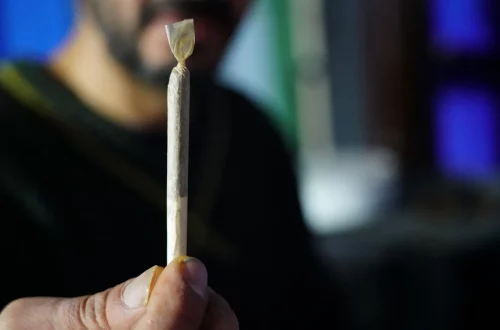
The Ultimate Guide to Choosing the Right Men’s Hairbrush
Choosing the right hairbrush is an often overlooked aspect of personal grooming, yet it can significantly impact the health and appearance of your hair. Men, like women, have unique hair types and needs that require specific tools to achieve the best results. A hairbrush is not just a simple grooming tool; it plays a crucial role in styling, detangling, and maintaining the overall condition of your hair.
In today’s world, where first impressions matter, having well-groomed hair can enhance your confidence and make a lasting impression. Whether you have thick, curly locks or fine, straight strands, using the correct hairbrush can make a world of difference. It helps distribute natural oils from your scalp, reduces frizz, and can even stimulate hair growth by increasing blood circulation to the scalp.
Understanding the different types of hairbrushes available and their specific functions can empower you to make an informed decision. From bristle types to brush shapes, each feature serves a purpose that caters to various hair textures and styling needs. In this guide, we’ll explore essential factors to consider when selecting a hairbrush that matches your hair type and styling preferences.
Understanding Different Hair Types
Before you can choose the right hairbrush, it is vital to understand the different hair types and their unique needs. Hair can generally be classified into four main categories: straight, wavy, curly, and coily. Each type has distinct characteristics that influence how it responds to various grooming tools.
Straight hair tends to be smooth and shiny, making it less prone to tangling. However, it can also become greasy quickly, as natural oils travel down the hair shaft more easily. For straight hair, a paddle brush or a wide-tooth comb is often recommended, as these tools can help distribute oils evenly while minimizing breakage.
Wavy hair is characterized by its natural bends and can range from loose waves to more defined curls. This hair type often requires a brush that can enhance its natural texture without causing frizz. A vent brush or a round brush is ideal for wavy hair, as they can add volume while maintaining the wave pattern.
Curly hair requires special attention and care, as it can be prone to dryness and frizz. A wide-tooth comb or a detangling brush specifically designed for curls is essential to prevent breakage. These tools can help separate curls without disrupting their natural formation, ensuring your locks remain healthy and well-defined.
Coily hair, which is often the most textured, requires the most care and moisture. Brushes designed for coily hair usually have wide, spaced-out bristles that can glide through without pulling or causing damage. A denman brush or a paddle brush with flexible bristles can be beneficial for detangling and styling coily hair without losing its natural shape.
Understanding your specific hair type is the first step in selecting a brush that will help you maintain and enhance your natural hair texture.
Material Matters: Choosing the Right Bristles
The material of the bristles can significantly affect how a hairbrush interacts with your hair. Hairbrushes typically come with either natural or synthetic bristles, and each type has its own advantages.
Natural bristles, such as boar bristles, are known for their ability to distribute oils from the scalp throughout the hair. This characteristic makes them an excellent choice for those looking to achieve shiny, healthy-looking hair. Additionally, natural bristles tend to be gentler on the hair, reducing the risk of breakage and damage.
On the other hand, synthetic bristles, often made from nylon or plastic, can be more effective at detangling hair and managing frizz. They are typically more durable and easier to clean than natural bristles. However, they may not provide the same level of oil distribution as natural bristles.
When choosing a hairbrush, consider your hair type and styling needs. If you have thick or textured hair, a brush with a combination of both natural and synthetic bristles may offer the best of both worlds. For fine or straight hair, a brush with softer natural bristles can help promote shine without causing damage.
Ultimately, the choice of bristle material can affect not only the performance of the brush but also the overall health of your hair, making it an essential factor in your decision-making process.
Brush Shape and Size: Finding Your Perfect Match
The shape and size of a hairbrush are equally as crucial as the bristle type when it comes to achieving optimal results. Different shapes serve different purposes, and understanding these can help you select a brush that fits your grooming routine.
Paddle brushes, for instance, are wide and flat, making them ideal for smoothing out straight hair. They cover a larger surface area, which allows for efficient detangling and styling of long hair. If you have straight or slightly wavy hair, a paddle brush may be your best bet.
Round brushes, on the other hand, are perfect for adding volume and creating curls or waves. They come in various sizes, allowing you to choose one that fits your hair length and styling preferences. Smaller round brushes are ideal for shorter hair, while larger ones work well for longer locks.
Vented brushes are designed with strategically placed holes that allow airflow, making them perfect for blow-drying. They help reduce drying time and minimize heat damage. If you regularly use a blow dryer, investing in a vented brush can enhance your styling process.
When selecting the shape and size of your hairbrush, consider your hair length, texture, and the styles you wish to achieve. A well-chosen brush can streamline your grooming routine and help you achieve your desired look with ease.
Maintenance Tips for Your Hairbrush
Once you’ve chosen the perfect hairbrush, it’s essential to take care of it to ensure its longevity and effectiveness. Regular maintenance will not only extend the life of the brush but also promote healthier hair.
Start by cleaning your brush regularly. Hair, oils, and product buildup can accumulate on the bristles, which can affect performance and hygiene. To clean your brush, remove any hair strands caught in the bristles using a comb or your fingers. Then, wash the bristles with warm water and a gentle shampoo or soap. Rinse thoroughly and allow it to air dry before using it again.
Avoid using your brush on wet hair, as this can cause breakage and damage. Instead, use a wide-tooth comb for detangling wet hair and save your brush for when your hair is dry. Additionally, store your brushes in a cool, dry place to prevent any warping or damage to the bristles.
Finally, if you notice any frayed or damaged bristles, it may be time to replace your brush. Using a brush with worn-out bristles can lead to snagging and breakage, which can hinder your hair’s health and appearance.
By incorporating these maintenance tips into your routine, you can ensure that your hairbrush remains in excellent condition, contributing to the overall health and style of your hair.
Choosing the right hairbrush is a significant step in achieving your grooming goals. Whether you have straight, wavy, curly, or coily hair, understanding your hair type and selecting the appropriate tools can make a world of difference. Remember to consider the materials, shapes, and maintenance practices to maximize the benefits of your chosen brush.
Please note that this article does not constitute medical advice. For any health concerns, please consult a qualified healthcare professional.




